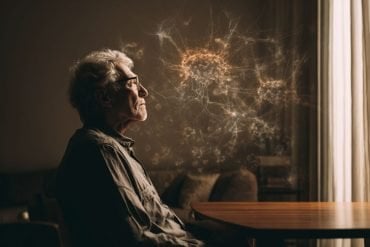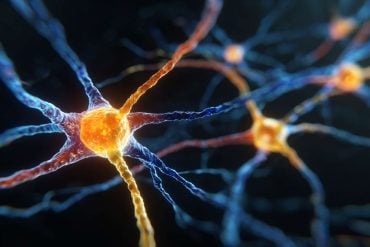Summary: A landmark study tested two leading theories of consciousness — Integrated Information Theory (IIT) and Global Neuronal Workspace Theory (GNWT) — but found neither definitively explained conscious experience. While IIT emphasizes deep integration of brain regions and GNWT highlights widespread broadcasting of information, data from 256 human subjects did not fully support either.
Notably, results suggested sensory and perceptual processing areas, rather than the prefrontal cortex, may play a more central role in conscious experience. This discovery could advance efforts to detect covert consciousness in unresponsive patients and reshape future research directions.
Key Facts:
- No Clear Winner: Neither Integrated Information Theory nor Global Neuronal Workspace Theory fully explained consciousness.
- Sensory Areas Highlighted: Findings suggest consciousness may be rooted in sensory processing, not prefrontal control.
- Clinical Implications: Understanding consciousness pathways may aid detection of covert awareness in brain injury patients.
Source: Allen Institute
An experiment seven years in the making has uncovered new insights into the nature of consciousness and challenges two prominent, competing scientific theories: Integrated Information Theory (IIT) and Global Neuronal Workspace Theory (GNWT).
The findings were published today in Nature and mark a pivotal moment in the goal to understand the elusive origins consciousness.
IIT suggests that consciousness emerges when information inside a system (like the brain) is highly connected and unified, for as long as the information is consciously perceived, acting as a single whole.
On the other hand, GNWT suggests a network of brain areas will spotlight important pieces of information in the brain—bringing it to the forefront of our minds—broadcasting it widely the moment it enters consciousness, and this produces conscious experience.
The two competing theories were tested against one another in 2019 in a collaborative experiment involving 256 human subjects, and the findings were just released.
“Adversarial collaboration fits within the Allen Institute’s mission of team science, open science and big science, in service of one of the biggest, and most long-standing, intellectual challenges of humanity: the Mind-Body Problem,” said Christof Koch, Ph.D., meritorious investigator at the Allen Institute.
“Unravelling this mystery is the passion of my entire life.”
The Findings
Research showed that there’s functional connection between neurons in early visual areas of the brain (the areas that process vision, which are at the back of the brain) and the frontal areas of the brain, helping us understand how our perceptions tie to our thoughts.
The findings de-emphasize the importance of the prefrontal cortex in consciousness, suggesting that while it’s important for reasoning and planning, consciousness itself may be linked with sensory processing and perception.
In other words, intelligence is about doing while consciousness is about being.
This discovery has implications for how we understand consciousness and may shed light on disorders of consciousness such as comas or vegetative states.
Identifying where consciousness comes from could help detect “covert consciousness” in unresponsive patients with severe injuries—a condition known to occur in about one-quarter of cases as reported in the New England Journal of Medicine last year.
Neither Theory Came Out on Top
Integrated Information Theory (IIT) says consciousness comes from the interaction and cooperation of various parts of the brain as they work together to integrate information, like teamwork. It arises from how these parts are connected and how they share information with each other rather than any one individual area or part of the brain generating consciousness.
The study, however, did not find enough lasting connections in the back of the brain to support this idea. Global Neuronal Workspace Theory (GNWT) supports the idea that consciousness happens in the front of the brain, but the study didn’t find enough support for this idea either.
“It was clear that no single experiment would decisively refute either theory. The theories are just too different in their assumptions and explanatory goals, and the available experimental methods too coarse, to enable one theory to conclusively win out over another,” said Anil Seth, Ph.D., a professor of cognitive and computational neuroscience at the University of Sussex.
“Having said all this, the findings of the collaboration remain extremely valuable – much has been learned about both theories and about where and when in the brain information about visual experience can be decoded from.
The study involved 256 subjects, which is unprecedented for this kind of experiment. Researchers showed them various visual stimuli and then used three common human brain measurement tools that track blood flow as well as magnetic and electrical activity to study their brains while they looked at the stimuli.
The highly collaborative experiment is the result of a large-scale, open science collaboration that began at a workshop at the Allen Institute in 2018.
This innovative approach brought together researchers with differing perspectives to test two theories in a collaborative, yet critical, environment aimed at reducing confirmation bias and accelerating scientific progress.
“Adversarial collaborations are a powerful social process, little used because of its challenging nature, within any field that has competing theories,” said Koch.
“The bio-medical field could hugely profit by ‘friendly’ competition among theories—neurobiological or others. But it requires a great deal of cooperation and work.”
About this consciousness and neuroscience research news
Author: Liz Dueweke
Source: Allen Institute
Contact: Liz Dueweke – Allen Institute
Image: The image is credited to Neuroscience News
Original Research: Open access.
“Adversarial testing of global neuronal workspace and integrated information theories of consciousness” by Christof Koch et al. Nature
Abstract
Adversarial testing of global neuronal workspace and integrated information theories of consciousness
Different theories explain how subjective experience arises from brain activity. These theories have independently accrued evidence, but have not been directly compared.
Here we present an open science adversarial collaboration directly juxtaposing integrated information theory (IIT) and global neuronal workspace theory (GNWT) via a theory-neutral consortium.
The theory proponents and the consortium developed and preregistered the experimental design, divergent predictions, expected outcomes and interpretation thereof.
Human participants (n = 256) viewed suprathreshold stimuli for variable durations while neural activity was measured with functional magnetic resonance imaging, magnetoencephalography and intracranial electroencephalography.
We found information about conscious content in visual, ventrotemporal and inferior frontal cortex, with sustained responses in occipital and lateral temporal cortex reflecting stimulus duration, and content-specific synchronization between frontal and early visual areas.
These results align with some predictions of IIT and GNWT, while substantially challenging key tenets of both theories. For IIT, a lack of sustained synchronization within the posterior cortex contradicts the claim that network connectivity specifies consciousness.
GNWT is challenged by the general lack of ignition at stimulus offset and limited representation of certain conscious dimensions in the prefrontal cortex.
These challenges extend to other theories of consciousness that share some of the predictions tested here.
Beyond challenging the theories, we present an alternative approach to advance cognitive neuroscience through principled, theory-driven, collaborative research and highlight the need for a quantitative framework for systematic theory testing and building.








